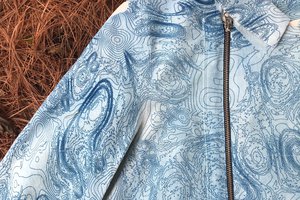You can use a simple cat toy (laser pointer) to demonstrate the Tyndall effect. "The Tyndall effect, also known as Tyndall scattering," according to Wikipedia, "is light scattering by particles in a colloid or particles in a fine suspension." You can use the laser to test three different mixtures: colloids, suspensions, and solutions. I'll demonstrate Tyndall scattering in a colloid (milk), in a suspension (dirt), and a solution (sugar) with a cat toy (Laser pointer).
Don't forget to follow me on Twitter @SteveSchuler20.
Parts needed:
250 ml beaker
Spoon
Eyedropper
Tap water
Cat toy (Laser pointer)
Milk
Sugar
Dirt from garden
First, you can test the Tyndall effect using ordinary tap water. You won't be able to see the laser beam piercing through the air, and you won't be able to see the laser beam in the beaker since there is nothing in ordinary tap water to cause Tyndall scattering.

I used my Erector Set Magnetic Optical Mount to hold my laser pointer while I shot the picture.
Colloids
You'll need an eyedropper with a small amount of milk, a spoon, and a beaker with 250 ml of water. Squeeze a few drops of milk from the eyedropper into the beaker and stir. Shine the laser through the beaker and you should now be able to observe the Tyndall effect:




You'll notice that you can't see the laser beam piercing through the air, but you can see the beam in the diluted milk and water mixture. A glass of milk is an example of a colloid and the Tyndall effect is what gives it its translucent appearance. Milk is mostly an emulsion of milk fat and water. An emulsion is "a suspension of small globules of one liquid in a second liquid with which the first will not mix" (source). Oil and vinegar do not mix, but vinaigrette is an emulsion of oil and vinegar. "Emulsion" is used to describe a colloid of two or more liquids (in the case of milk, milk fat droplets dispersed in water) as opposed to, say, an aerosol colloid like fog (water droplets dispersed in air). The milk fat globules are too small to be seen with the naked eye or even through an optical microscope, but (unlike a solution) are large enough to scatter light and create the Tyndall effect. Colloids are visually homogeneous (uniform throughout), but microscopically heterogeneous (lumpy/grainy--in this case, the globules of milk fat remain separate from the water). Generally, colloids cannot easily be filtered nor settle at the bottom of the beaker.
Suspensions
Stir 5 grams (1 teaspoon) of dirt from your garden into a beaker with 250 ml (about 8 ounces) of water. Before the dirt settles, shine the laser pointer through the beaker. You should be able to observe the Tyndall effect before the particulate (the particles of dirt suspended in the water) settles to the bottom of the beaker. Suspensions are heterogeneous (lumpy/grainy—the grains of dirt suspended in the water). Particles in a suspension are usually large enough to see with the naked eye or be viewed through an optical microscope. They are often large enough to be filtered from the water, and, of course, will eventually settle to the bottom of the beaker.

Solutions
Stir 5 grams (1 teaspoon) of table salt (NaCl) into a beaker with 250 ml (about 8 ounces) of water. Stir until all the salt (solute) dissolves in the water (solvent). When the NaCl dissolves in water it separates into sodium (Na+) cations and chloride (Cl-) anions too small to be seen with the naked eye and will not scatter the light from the laser beam. Solutions are homogeneous mixtures, that is, the water molecules, sodium cations, and chloride anions are uniform throughout the mixture. The mixture is stable (the salt, once dissolved, won't settle to the bottom of the beaker) and the salt cannot be filtered from the water.
Shine the laser pointer through the beaker containing the saline solution and, well, nothing interesting was supposed to happen. But you can see the Tyndall Effect in my sample of table salt and water.

I read the ingredients in my box of salt and included with ordinary...
Read more » Steve Schuler
Steve Schuler



 Theodor Hillebrand
Theodor Hillebrand
 Shih Wei Chieh
Shih Wei Chieh
 Chris Mitchell
Chris Mitchell
 M. Bindhammer
M. Bindhammer
Nice.
Kids love this stuff.
Keep doing more :)